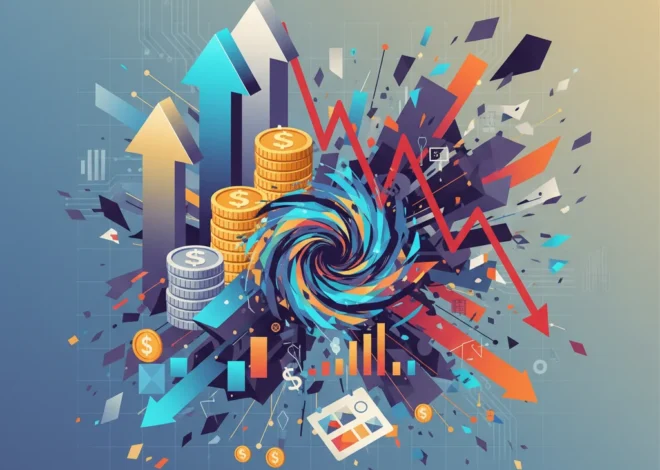
Hong Kong’s New Highs: Reading the Economic Tea Leaves in a City Reborn
For decades, Hong Kong’s skyline has been a globally recognized symbol of financial prowess—a vertical testament to capital, ambition, and relentless energy. But for the discerning investor and business leader, the most telling indicators of a city’s future aren’t always found in the heights of its skyscrapers, but in the vibrancy of its streets and the vision of its cultural foundations. A recent exploration of the city’s evolution reveals a narrative that extends far beyond the trading floor, suggesting a calculated and profound reinvestment in its own identity as a global nexus for both capital and culture.
While headlines often focus on geopolitical shifts and market volatility, a ground-level view of Hong Kong shows a city that is not just recovering, but actively reshaping its value proposition. It’s a place where, as one observer noted, people “work and play in public,” a concept that speaks volumes about its transparent, high-velocity business environment. This fusion of life and commerce is now being amplified by monumental investments in public infrastructure and cultural landmarks, creating a compelling new chapter in Hong Kong’s economic story.
The New Foundation: Infrastructure as a Long-Term Economic Moat
The most potent symbol of this renewal is the West Kowloon Cultural District, a sprawling 40-hectare project that represents one of the most significant cultural investments in the world. For those focused on finance and economics, it’s crucial to view this not as a mere tourist attraction, but as a strategic fortification of Hong Kong’s economic moat. The district, featuring the M+ museum of visual culture and the Hong Kong Palace Museum, is an audacious bet on the power of “soft power” to attract and retain the world’s most valuable resource: human talent.
In an era where top professionals in banking, fintech, and asset management can work from anywhere, quality of life becomes a decisive competitive advantage. By creating a world-class cultural ecosystem, Hong Kong is directly investing in the environment that will draw the next generation of innovators and leaders. This infrastructure supports the city’s core financial industries by making it a more desirable place to live, raise a family, and build a career. It’s a long-term play on the city’s residential and commercial real estate markets, and a direct enhancement of its appeal as a regional headquarters for multinational corporations.
This investment signals a deep understanding of modern economics: that a thriving economy is an ecosystem, not just a marketplace. The seamless integration of the high-speed rail terminus at West Kowloon, for instance, physically and economically anchors Hong Kong as the premier international gateway to the Greater Bay Area, a region with a combined GDP of nearly $2 trillion. This connectivity is the bedrock upon which future growth in trade, investment, and financial services will be built.
The New Witches of Wall Street: How Disruption is Rewriting the Rules of Finance
Art, Capital, and the New Global Crossroads
The opening of institutions like M+ is more than an aesthetic upgrade; it’s a strategic move in the global flow of capital. Hong Kong has long been a hub for art auctions and private wealth, but by institutionalizing its cultural offerings, it solidifies its status as a complete, multifaceted financial center. M+, with its global collection of 20th and 21st-century visual culture, acts as a powerful magnet for high-net-worth individuals, family offices, and the sophisticated capital they command. These are the same individuals and entities driving significant activity in private equity, venture capital, and the broader stock market.
The strategic importance of this cultural investment becomes clearer when compared to other global financial hubs. While London, New York, and Singapore all boast rich cultural scenes, Hong Kong’s recent developments are notable for their scale, ambition, and direct integration with new urban and commercial zones like K11 Musea at Victoria Dockside (source).
Below is a comparative look at how these investments position Hong Kong:
| Global Financial Hub | Key Cultural Investment Focus | Strategic Economic Objective |
|---|---|---|
| Hong Kong | Large-scale, integrated cultural districts (e.g., West Kowloon) with a focus on modern and Asian art. | Enhance liveability, attract global talent, solidify status as a wealth management hub, and serve as a cultural gateway to Mainland China. |
| Singapore | State-supported museums and performance venues (e.g., National Gallery, Esplanade). | Build a national identity, attract tourism and MICE (Meetings, Incentives, Conferences, and Exhibitions) events, and present a stable, well-ordered environment for business. |
| London | Legacy institutions (e.g., British Museum, Tate Modern) and a vibrant commercial theatre scene. | Leverage historical and cultural depth to maintain global influence, attract tourism, and support creative industries as a key sector of the economy. |
| New York | World-renowned museums (e.g., MoMA, The Met) and the Broadway cultural-commercial engine. | Drive tourism, anchor prime real estate values, and reinforce its identity as the epicenter of Western media, art, and finance. |
Hong Kong’s approach is unique in its deliberate fusion of culture with commerce and infrastructure, creating a powerful synergy that supports its entire economic apparatus.
The Digital Harbour: Where Fintech Meets Tradition
This physical evolution is mirrored by an equally dynamic transformation in its digital landscape. Hong Kong’s traditional strengths in banking and finance are providing fertile ground for a revolution in financial technology. The city’s regulatory framework, including its fintech supervisory sandbox, allows for the rapid testing and deployment of new technologies, from AI-driven trading algorithms to blockchain-based settlement systems.
The government and private sector are aggressively pushing into the digital asset space, aiming to establish Hong Kong as a premier hub for virtual assets and Web3 innovation. This isn’t a departure from its core identity but an evolution of it. Just as the physical harbour facilitates the flow of goods, the city’s digital infrastructure is being built to facilitate the flow of tokenized assets, smart contracts, and decentralized finance (DeFi) protocols. This forward-looking stance on blockchain and financial technology is critical for its future relevance in global finance, ensuring it remains a vital node in the world’s increasingly digital economy.
For investors, this dual-track evolution—physical and digital—presents unique opportunities. The growth in fintech creates new avenues for venture capital and private equity, while the infrastructure boom provides stable, long-term plays in real estate and construction. This synergy is what makes the current moment in Hong Kong so compelling.
In the Red Jersey: Analyzing Rapha's Steep Climb to Financial Recovery
From Street-Level Buzz to Stock Market Signals
Ultimately, the “vibe” of a city is a powerful, if intangible, economic indicator. The energy felt in the crowded MTR, the deal-making in hotel lobbies, and the creative collisions in places like the Tai Kwun Centre for Heritage and Arts (source) all translate into market sentiment. This palpable dynamism is a reflection of the city’s core function as a connector—of capital, ideas, and people.
This environment has a direct impact on the Hong Kong stock market, one of the world’s most active and liquid exchanges. The constant flow of information and the density of talent create an efficient, if sometimes volatile, trading environment. Understanding the city’s cultural and social shifts provides crucial context for interpreting market movements. The confidence demonstrated by massive, long-term capital projects can serve as a powerful counter-narrative to short-term market jitters, offering a clearer signal of the city’s underlying economic health and future trajectory.
In conclusion, to truly understand the investment landscape of Hong Kong today, one must look beyond the stock tickers and economic reports. The city is authoring a new narrative, one where cultural capital is a direct driver of financial capital. The new museums, parks, and public spaces are not distractions from the business of finance; they are the very foundation upon which its future will be built. For the astute investor, Hong Kong’s new highs are not just on the Hang Seng Index, but in the ambitious, evolving, and resilient spirit of the city itself.
A Green Giant Stumbles: Why Vestas' Polish Pause Signals a Storm for European Wind Energy


